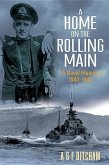At the end of World War I, and upon the signing of the Treaty of Versailles, the German Armed Forces had been drastically reduced by the Allies. The German Navy was stripped of its battleships, submarines, and aircraft. The effort to rebuild began immediately following the war. The decision about what direction and shape the Navy would take was influenced by several factors. The German Navy's anticipated enemy, the restrictions of the Treaty of Versailles, and the political situation all played a part in the development of the post-World War I German Navy. At least as important as any of these factors was the influence of two prominent naval theorists, A.T. Mahan, and Sir Julian Corbett. This thesis examined the extent that the theories of Mahan and Corbett influenced the development of German Naval Strategy between 1930 and 1936. The period includes the remnants of the Weimar Republic, the ascension of Adolf Hitler, and the signing of the Anglo-German Naval agreement in 1935, and finally the first of naval developments after the treaty. Understanding the role of Mahan in the development of the Kriegsmarine is essential for any student of modern naval history.








